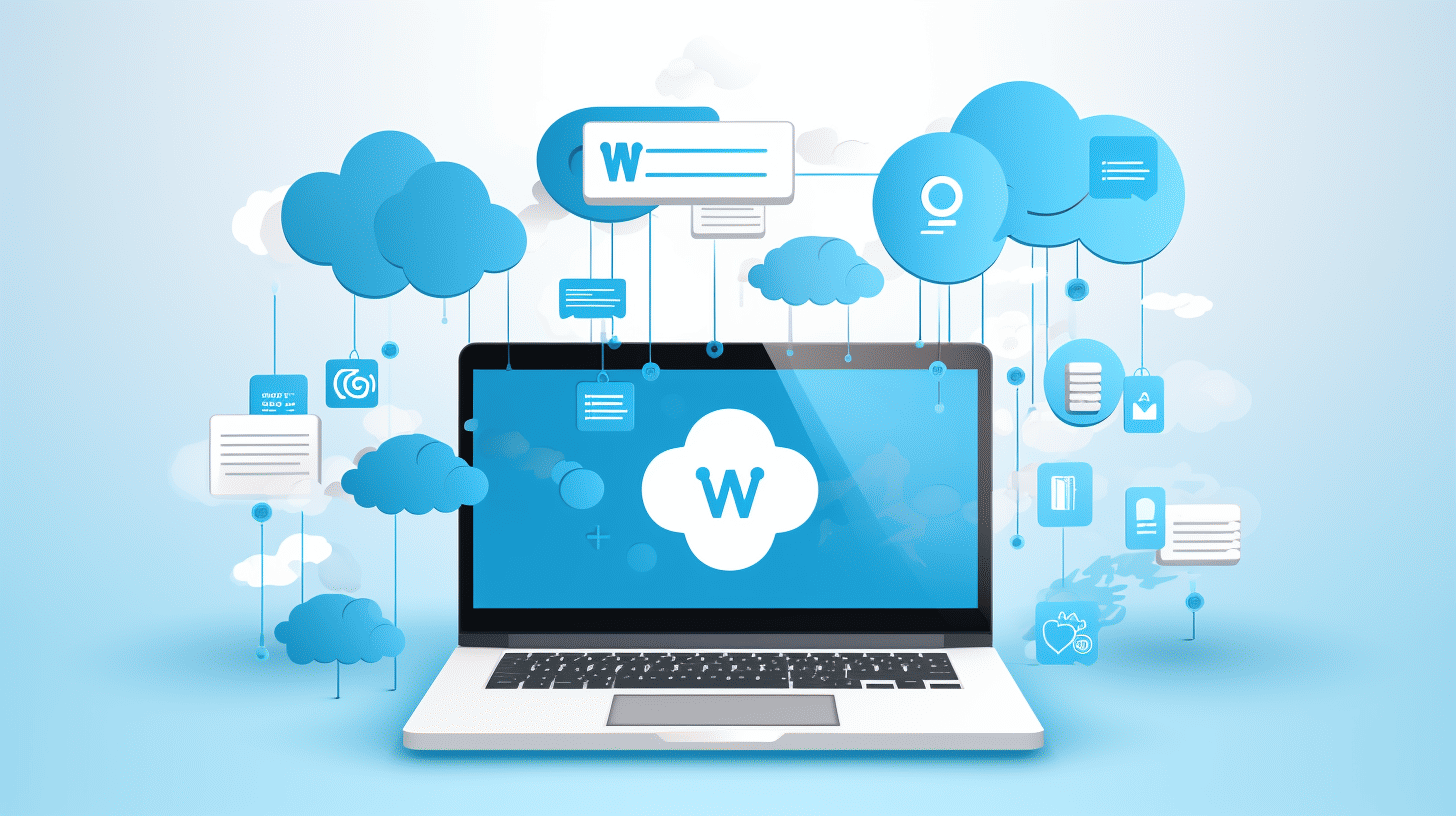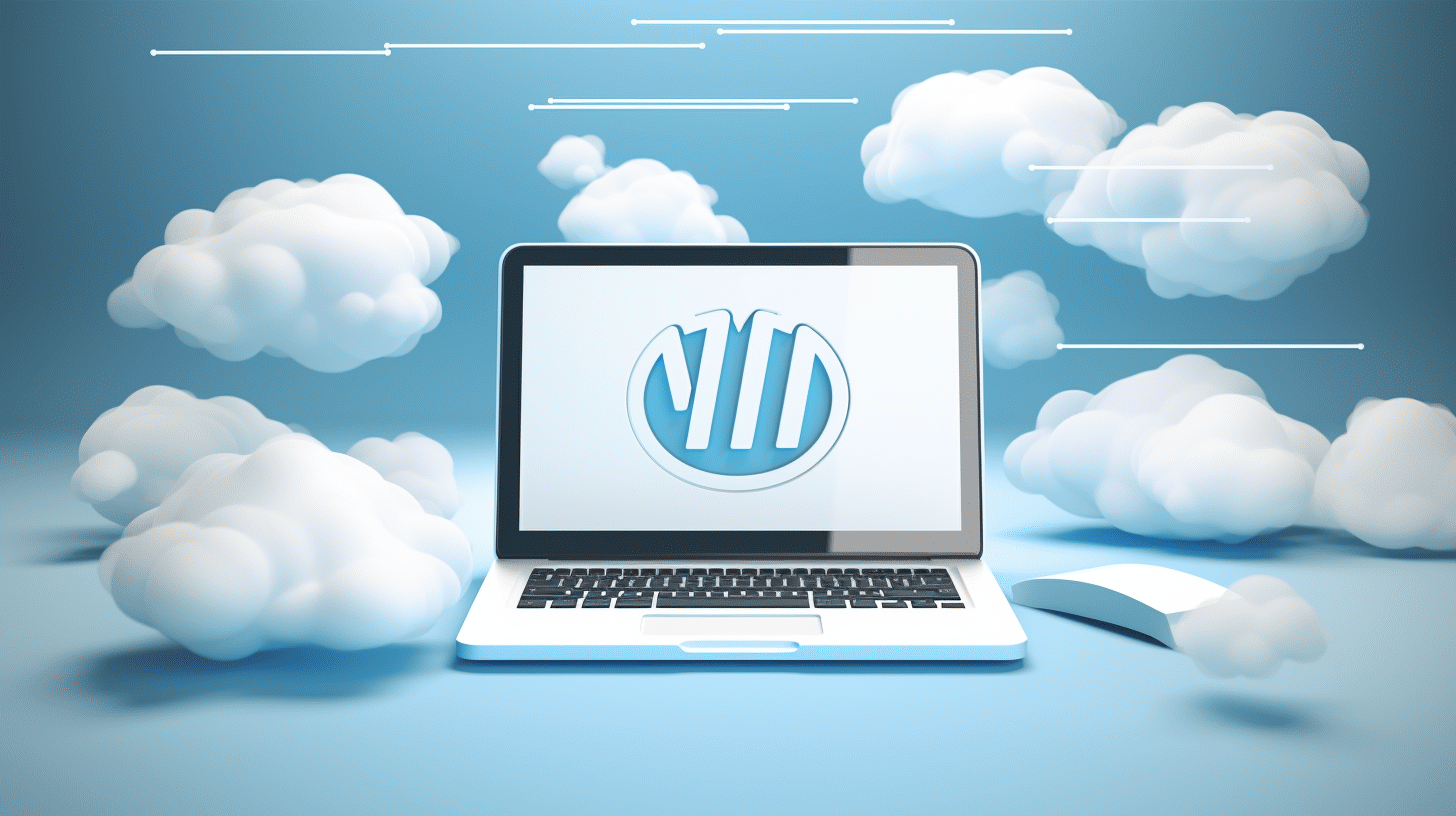WordPress is a popular and powerful content management system (CMS) used by millions of websites around the world. It is known for its user-friendly interface, extensive customization options, and a wide range of plugins and themes. However, with great popularity comes great responsibility, especially when it comes to website security.
In today’s digital landscape, where cyber threats are on the rise, ensuring the safety and security of your WordPress website is of utmost importance. As an IT manager, it is your duty to proactively protect your organization’s assets and reputation by taking steps to prevent security breaches.
In this article, we will delve into the world of WordPress vulnerabilities, the scope of hacked websites, and the reasons behind successful attacks. More importantly, we will provide you with a comprehensive guide on proactive measures you can take to safeguard your WordPress website from potential threats.
So, let’s dive in and explore the proactive steps you can implement to maintain the security and integrity of your WordPress website. From limiting login attempts to regularly updating software and plugins, we have got you covered. Don’t let your website become another statistic – take action now and keep your WordPress website safe and secure. 💻🛡️
Understanding WordPress Vulnerabilities
🔒 Securing Your WordPress Site: A Comprehensive Guide to Protecting Your Website
WordPress is an incredibly popular platform, powering over 35% of all websites on the internet. Its ease of use, flexibility, and vast array of plugins make it attractive to users of all levels of technical expertise. However, with great popularity comes great responsibility, and it’s important to understand the potential vulnerabilities that can arise when using WordPress.
Software Vulnerabilities
One of the primary sources of WordPress vulnerabilities is outdated software. According to a recent report, a staggering 39.3% of hacked WordPress sites were running out-of-date WordPress core software[1]. This means that hackers exploited security flaws that had already been patched in newer versions. To ensure the security of your WordPress site, it is crucial to keep your core software up to date.
Here are a few key points to consider:
- Regular Updates: WordPress regularly releases updates and security patches to address vulnerabilities and improve stability. Make it a habit to check for and install updates promptly.
- Automatic Updates: Consider enabling automatic updates for your WordPress site to ensure that you’re always running the latest version. This can help protect your site from known vulnerabilities.
- Backup Your Site: Before performing any updates, it’s essential to have a backup of your website. In the event that something goes wrong during the update process, you can restore your site to its previous state.
Plugin Vulnerabilities
Plugins are an integral part of the WordPress ecosystem, offering additional functionality and customization options. However, they can also introduce vulnerabilities if not properly maintained.
According to a study, 52% of WordPress vulnerabilities are related to plugins[1]. With over 50,000 plugins available in the WordPress repository, it’s crucial to choose reputable plugins from trusted sources and regularly update them to ensure you have the latest security patches.
Consider the following tips to enhance the security of your plugins:
- Evaluate Plugins: Before installing a plugin, do your research by checking user reviews, ratings, and the plugin’s update frequency. Look for plugins that have been tested and maintained by reputable developers.
- Remove Unused Plugins: If you have plugins that you no longer use, it is best to uninstall and remove them from your site. Keeping unused plugins increases the potential attack surface of your site.
- Regular Updates: Similar to core software, plugins also receive updates to address vulnerabilities and improve functionality. Make sure to keep your plugins up to date to minimize the risk of exploitation.
- Security-Focused Plugins: Consider installing security-focused plugins such as Wordfence or Sucuri that provide additional layers of protection against common vulnerabilities and threats.
Stay Informed and Proactive
Understanding WordPress vulnerabilities is the first step towards securing your website. By staying informed and following best practices, you can minimize the risk of security breaches and protect your valuable online presence.
Remember, security is an ongoing process, and regular maintenance is crucial to the integrity of your WordPress site. So, take the necessary steps to secure your site and keep those hackers at bay!
🔒 Securing Your WordPress Site is a useful resource that provides more insights and guidance on safeguarding your WordPress site. Check it out for detailed information on mitigating vulnerabilities and protecting your valuable online asset.
“There are over 9,500 vulnerabilities in WordPress core software, with a 150% increase in the number of vulnerabilities facing WordPress” [1]
[1]: Securing Your WordPress Site
The Scope of WordPress Hacked Websites
Did you know that approximately 4.7 million WordPress websites are hacked each year? That’s a staggering number, highlighting the pervasive nature of cybersecurity threats in the digital landscape. With over 40% of all websites built on WordPress, it’s no surprise that hackers often target this popular platform.
Here are a few more eye-opening statistics to give you an idea of the scale of the issue:
- 13,000 WordPress websites are hacked every single day. That means every time you blink, a WordPress site falls victim to a malicious attack.
- Attackers are relentless, launching around 90,000 attacks on WordPress sites every minute. They exploit vulnerabilities, leverage weak passwords, and employ various tactics to infiltrate websites.
- Shockingly, 30,000 new websites are hacked every day. These numbers paint a grim picture of the ongoing battle between hackers and website owners.
To understand the severity of this problem, we must first recognize the consequences of a hacked WordPress website. It goes beyond mere inconvenience; hacking incidents can have far-reaching impacts.
When a website is compromised, it can lead to:
- Loss of sensitive information: Hackers often target websites to gain access to valuable user data. This could include personal information such as names, email addresses, passwords, and even financial details. If your website handles customer data, the potential risk is even greater.
- Damage to reputation: A hacked website can significantly tarnish the reputation of a business or an individual. Visitors may lose trust in the site and be hesitant to engage or transact with it. This, in turn, can lead to a loss of customers and revenue.
- Disruption of business operations: When a website is compromised, it may be taken offline or defaced. This downtime can have a severe impact on a business’s ability to serve its customers, resulting in missed opportunities and financial losses.
- Blacklisting by search engines: If a website is hacked, it may be flagged by search engines as potentially malicious. As a result, the website’s ranking could drop significantly, leading to reduced organic traffic and visibility.
Now that we understand the scope and implications of WordPress hacking, it’s crucial to discuss strategies for mitigating the fallout from such incidents. To learn more about tackling hacked websites and effective malware removal strategies, check out Hacked Website Fallout Strategies. Remember, it’s essential to remain vigilant, implement robust security measures, and have a plan in place to address any potential security breaches. Stay safe and protect your WordPress website from the ever-present threat of hacking.
Reasons for WordPress Websites Being Hacked
In today’s digital landscape, WordPress has become one of the most popular platforms for building websites. However, with great popularity comes great responsibility, especially when it comes to website security. WordPress websites are often targeted by hackers due to various vulnerabilities. This section will explore two significant reasons why WordPress websites get hacked: outdated software and weak passwords.
Outdated Software
One of the primary reasons why WordPress websites fall victim to hacking is the use of outdated software. Outdated software, including outdated versions of WordPress core, plugins, and themes, can have security vulnerabilities that hackers exploit. Here are some important points to consider:
- According to a study, 74% of hacked WordPress sites used obsolete software[1]. This staggering statistic emphasizes the criticality of keeping your WordPress software up to date.
- Hackers are often on the lookout for security loopholes in older versions of WordPress. By running the latest version, you ensure that you have the latest security patches and bug fixes, reducing the risk of unauthorized access.
- Outdated plugins and themes can also pose a security risk. It’s crucial to regularly update these components to ensure they are not exposing your website to potential vulnerabilities.
Weak Passwords
Another major reason why WordPress websites get hacked is the use of weak passwords. Despite the constant reminders to create strong passwords, many users still opt for easy-to-guess combinations. Consider the following:
- Research indicates that 8% of WordPress websites are hacked due to weak passwords[1]. This emphasizes the importance of creating strong, complex passwords to protect your website.
- Hackers often employ brute force attacks, using automated tools to guess weak passwords. By using strong passwords, you make it significantly more challenging for hackers to gain unauthorized access to your WordPress website.
- Ensure that your password consists of a mix of uppercase and lowercase letters, numbers, and special characters. Longer passwords are also more secure, so aim for a minimum of 12 characters.
Taking proactive steps towards WordPress security is crucial to safeguarding your website from potential threats and hacking attempts. By regularly updating your software and implementing strong, complex passwords, you significantly reduce the risk of becoming the next victim of a hacked WordPress website.
To learn more about prioritizing WordPress security, you can visit Managed WP’s blog here.
[1] Data source: Managed WP.
Proactive Steps to Protect Your WordPress Website
In the ever-evolving landscape of website security, it’s crucial to stay one step ahead of potential threats to your WordPress website. By taking proactive measures to protect your site, you can safeguard your valuable content and ensure a smooth user experience for your visitors. Here are some actionable steps you can take to fortify your WordPress site against cyberattacks.
Limiting Login Attempts
One of the most common ways hackers gain unauthorized access to WordPress websites is through brute force attacks. These attacks involve attempting multiple login combinations until the correct credentials are found. To combat this, consider implementing a login attempt limitation mechanism. This feature restricts the number of login attempts, typically by IP address, within a specific time frame. By doing so, you can effectively minimize the chances of a successful brute force attack.
Using Strong Passwords
It may seem obvious, but using strong passwords is a fundamental defense against unauthorized access. Weak passwords can easily be guessed or cracked by attackers using automated tools. Ensure that your WordPress website’s admin, user, and database passwords are strong, unique, and updated regularly. A strong password typically consists of a combination of uppercase and lowercase letters, numbers, and special characters.
Installing a Web Application Firewall (WAF)
A Web Application Firewall (WAF) acts as a protective shield for your WordPress site, filtering out malicious traffic and preventing potential attacks. It helps detect and block common security threats, such as SQL injections and cross-site scripting (XSS). By installing a WAF, you add an extra layer of defense to your website, significantly reducing the risk of compromise.
Regularly Updating WordPress Core Software, Themes, and Plugins
Outdated software, themes, and plugins can become vulnerable targets for hackers. Keeping your WordPress core software, themes, and plugins up to date is crucial for maintaining a secure website. Regular updates often include security patches that address known vulnerabilities. Make sure you enable automatic updates or regularly check for updates and apply them promptly.
Using SSL Certificates
SSL (Secure Sockets Layer) certificates encrypt the communication between a user’s browser and your website, ensuring data confidentiality and integrity. By installing an SSL certificate, you establish a secure HTTPS connection, reassuring your visitors that their information is transmitted securely. Additionally, Google considers SSL certificates as a ranking factor, so implementing SSL can also positively impact your site’s SEO.
Securing Login Procedures
Securing login procedures is essential in preventing unauthorized access to your WordPress admin area. Enable two-factor authentication (2FA) for all user accounts, including the administrator account. 2FA provides an additional layer of security by requiring users to enter a verification code, usually sent to their registered email or authenticator app, along with their username and password. This adds an extra barrier, significantly reducing the chances of successful login attacks.
Backing Up Your WordPress Site Regularly
Having a reliable backup system in place is essential in case of a security breach or a website malfunction. Regularly backing up your WordPress site ensures that you have a recent copy of your website’s files and databases that can be restored in case of any issues. Consider using a reputable backup plugin or utilizing your web hosting provider’s backup services to simplify the backup process.
Utilizing Security Plugins
WordPress offers a wide range of security plugins to choose from, each with its unique features and functionalities. These plugins can help monitor and protect your website from various threats, such as malware infections, suspicious activities, and unauthorized access attempts. You can explore popular security plugins like Sucuri Security, Wordfence, and iThemes Security tools to find the one that best suits your requirements.
Remember, security is an ongoing process, and implementing these proactive measures is essential to keep your WordPress website safe and secure. By staying vigilant and taking the necessary precautions, you can protect your valuable content, maintain your website’s reputation, and provide a secure experience for your visitors.
For more in-depth information on WordPress security plugins, check out our article on Top 10 WordPress Security Plugins.
Conclusion
In conclusion, taking proactive steps to protect your WordPress website is crucial in ensuring its safety and security. By implementing measures such as limiting login attempts, using strong passwords, installing a Web Application Firewall (WAF), regularly updating WordPress software, using SSL certificates, securing login procedures, backing up your website regularly, and utilizing security plugins, you can significantly reduce the risk of your website being hacked or compromised.
Remember, prevention is always better than cure when it comes to website security. By staying proactive and implementing these preventive measures, you can save yourself from the headache and potential losses that come with a hacked website.
If you’re looking for a reliable and secure managed WordPress hosting platform, look no further than Managed-WP™. With its premium infrastructure and expert problem-solving team available 24/7/365, Managed-WP™ is here to simplify your WordPress hosting experience and provide you with the freedom to focus on your digital endeavors. Take control of your website’s security with Managed-WP™.
Visit Managed-WP.com to learn more and start protecting your WordPress website today.
Frequently Asked Questions
- What are the proactive steps IT managers can take to keep a WordPress website safe?
IT managers can take several proactive steps to keep a WordPress website safe, including: regularly updating the WordPress core, themes, and plugins; implementing strong passwords and two-factor authentication; using a reputable security plugin; conducting regular security audits; and backing up the website regularly.
- Why is it important to regularly update the WordPress core, themes, and plugins?
Regularly updating the WordPress core, themes, and plugins is crucial for website security. Updates often contain bug fixes, performance improvements, and most importantly, security patches that address vulnerabilities. Updating ensures that your website is protected against known threats.
- What is two-factor authentication and why should it be used?
Two-factor authentication adds an extra layer of security to the login process. It requires users to provide two forms of identification, usually a password and a unique, temporary code sent to their mobile device. This helps prevent unauthorized access even if the password is compromised.
- Are security plugins necessary for WordPress websites?
Yes, using a reputable security plugin is highly recommended for WordPress websites. These plugins offer features like malware scanning, firewall protection, login protection, and activity monitoring, which help detect and prevent security breaches.
- Why is regular security auditing important for a WordPress website?
Regular security audits help identify and address any vulnerabilities or weaknesses in your WordPress website’s security. It allows you to assess your current security measures, fix any issues, and stay proactive in defending against potential threats.



















